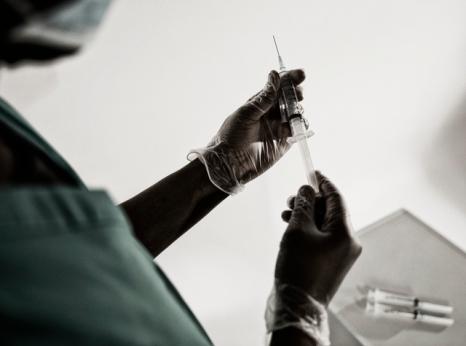USA: Missouri Execution Set For 2005 Murder

On 5 July 2005, a police patrol spotted Kevin Johnson’s car outside his family’s home in Meacham Park, adjacent to Kirkwood, near Saint (St) Louis. The 19-year-old youth was out on probation for an earlier misdemeanor charge and there was an arrest warrant accusing him of violating its terms. While the officers searched the car, Kevin Johnson’s grandmother ran out of her house calling for help, because one of her other grandsons and brother to Kevin Johnson, aged 12, had just collapsed and lost consciousness. Kevin Johnson, who was next door at the time, watched a police officer remove his mother from the house and prevent her from going back inside to her son. The 12-year-old boy was rushed to hospital, where he died of a heart condition.
Later that same afternoon, Kevin Johnson encountered one of the police officers who had been at the house. Kevin Johnson, who would later testify that he had “flipped out” and describe his mental state as being in a “trance”, accused the officer of killing his brother, and fired multiple times at him before walking away. The officer survived this, but his car rolled down the street, hit a tree and came to rest. The officer got out of the car, at which point Kevin Johnson shot the officer again. Of the total of seven gunshot wounds, one was fatal.
The prosecutor charged Kevin Johnson with first-degree murder. Under Missouri law, a person commits murder in the first degree “if he or she knowingly causes the death of another person after deliberation upon the matter”. Deliberation is defined as “cool reflection for any length of time no matter how brief”. His first trial in St Louis County in early 2007 ended in a hung jury, which voted 10-2 for second-degree murder. A second trial began in late 2007. This time, in pursuit of a first-degree murder conviction, the prosecutor repeatedly emphasised that Kevin Johnson had deliberated with “cool reflection” before killing the officer because he made a “conscious decision” to do so. Even though second-degree murder is a knowing and intentional killing under state law – what the first jury in early 2007 had come close to convicting him of – the defence never objected to the prosecutor’s tactic. Neither did the defence obtain expert mental health opinion about Kevin Johnson’s state of mind at the time of the shootings, and whether it would have impacted his capacity to deliberate.
As a young child and teenager, Kevin Johnson endured a life of severe poverty, deprivation, sexual and physical abuse, and neglect. He had a history of serious depression and experienced auditory hallucinations and suicidal ideation. He tried to kill himself when he was 13 or 14. In 2016, a neuropsychological examination and review of voluminous background materials concluded that Kevin Johnson was “born into a violent, abusive, and neglectful environment, with a genetic predisposition to mental illness”. It found that from a young age he had “developed a number of mental disorders, including Major Depressive Order, Attention Deficit Hyperactivity Disorder [ADHD], and psychosis; all of which have required treatment with psychotropic medications”. He further suggested that such information could have been relevant to decision-makers at the trial, including “as a mitigating issue with regard to his moral culpability at the time of the offense”. International law prohibits the death penalty against people with psychosocial (mental) disabilities. In this regard, the UN Human Rights Committee has said that states “must refrain from imposing the death penalty […] on persons who have limited moral culpability”.
In 2005, the US Supreme Court – in line with international law – banned the death penalty for individuals under 18 at the time of the crime on grounds of their reduced moral culpability. It recognized young people’s immaturity, impulsiveness, poor judgment, and susceptibility to “negative influences and outside pressures, including peer pressure”, as well as their potential for reform. It noted that “the qualities that distinguish juveniles from adults do not disappear when an individual turns 18”. In 2018, adopting a resolution calling on all death penalty jurisdictions in the USA “to not execute or sentence to death anyone who was 21 years old or younger at the time of the offense”, the American Bar Association pointed to “a growing scientific consensus that key areas of the brain relevant to decision-making and judgment continue to develop into the early twenties”, part of the “evolving moral consensus that late adolescents share a lesser moral culpability with their teenage counterparts”
Kevin Johnson is Black. The murder victim was white. A recent expert study of 408 death penalty-eligible crimes in St Louis County committed between 1977 and 2018 (with sentencing dates between 1991 and 2020), after controlling for aggravating and mitigating factors, concluded that white-victim cases were 3.5 times more likely to result in a death sentence than cases in which the victims were Black. It further concluded that the race-of-victim effects were “particularly pronounced at two decision-points attributable solely to the prosecutor, the decision to charge the case as a first-degree murder and the decision to give notice of intention to seek death”. In cases involving the murder of police officers, the St Louis County prosecutor’s office handled five such cases in the 27-year tenure of the Prosecuting Attorney who oversaw the trial of Kevin Johnson. Four of these cases involved Black defendants, against whom the prosecution sought the death penalty. It did not do so in the case of the one white defendant.
Amnesty International opposes the death penalty in all cases, unconditionally. There have been 12 executions in the USA in 2022, and 1,552 there since the US Supreme Court upheld new capital statutes in 1976. Missouri accounts for 92 of these executions, 80 per cent of which were for crimes involving white victims.